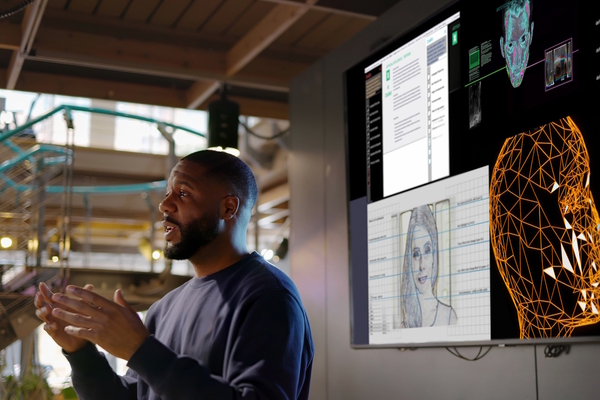Supporting working parents

Mike Morini, CEO of WorkForce Software asks whether workers caring for young families are being pushed out of shift-based jobs
As a father and proud grandfather, I understand the challenges of being a working parent. Being a parent is a full-time job in its own right and combining that with work comes with a set of unique challenges.
With the rise of remote working post-pandemic, many working parents have experienced a level of flexibility never felt before. The ability to log-on from home when a child is sick and not in school or work flexible hours to accommodate the school pick-up and drop-off has meant many working parents with office-based jobs are enjoying a new level of work-life balance and more time spent with family.
In fact, 61% of them say that the pandemic enabled them to spend more quality time with their children - resulting in many employees refusing to go back to previous full-time office work and even switching employers in order to maintain their remote and hybrid work.
However, the same flexibility is not available to more than 80% of the global workforce whose work doesn’t lend itself to this at-home paradigm. These ‘deskless’ workers and key members of society working in our hospitals, schools, transport, stores, factories, and in the field performing onsite work are absolutely necessary to maintain our way of life.
We’re seeing many organisations losing this vital cohort of workers due to a lack of flexibility in shift-based industries, where only 31% of organisations provide their frontline staff with scheduling control, flexible schedules, or even the ability to shift swap with colleagues.
This lack of ‘frontline flexibility’ is a major concern for businesses and poses a conundrum for employers who report a willingness to accommodate more freedom for employees but often lack the ability to deliver it. Most office workers can easily be given the option to work from home with just a laptop and Wi-Fi and then step away from their laptops to pick up the kids from school
It’s not as simple for frontline workers. A healthcare worker can’t step away from a patient or provide patient care from the comfort of their living room.
However, this doesn’t mean that employers shouldn’t look for other ways to provide control and flexibility to shift-based workers – even if it takes a slightly different form. With this in mind, let’s explore the different ways businesses can support shift-based, working parents.
The root of the issue
When addressing the challenges of working parents, it’s important to start where most of their concern lies - childcare. More specifically, who can look after their child and how much it will cost.
In the UK, the costs and lack of childcare provisions are two major reasons why an increasing number of parents are opting to leave full-time employment. In fact, according to the latest research, childcare costs are forcing one in four British parents to give up their job. However, rarely mentioned in the conversation are the further difficulties parents of young children face when it comes to managing childcare around shift work.
The reality is that many employers aren’t supporting staff in this vital area of their working lives, with analysis revealing that almost half (43%) of managers say their company does not offer flexible scheduling for deskless shift workers.
The benefits of smart scheduling technology
One in five working parents say they don’t receive any type of support from their employer when it comes to helping them manage childcare, and whilst it is not possible for every company to offer on-site childcare (especially in frontline work environments like manufacturing or retail) there are many other ways businesses can lend a helping hand – the easiest and arguably the most beneficial being flexible scheduling.
Working parent or not, workers want more control and flexibility in their schedules, often listing it as more important than compensation. While flexible working is enjoyed by most parents who are office-based, those who work in shift-based roles often miss out on this benefit due to the need to perform work in a specific location or due to the complexities of their job.
However, with a modern workforce management system, flexibility for this group can be more easily achieved by giving frontline parents control over their own schedules, allowing them to coordinate personal or work obligations themselves, submit time-off requests, and even have easy access to shift swapping, which becomes vital for shift-based workers when they need to take their child to a doctor’s appointment, or clock-off early if the babysitter cancelled.
More forward-looking companies are considering alternatives to traditional work patterns and considering ways to create ongoing flexibility in scheduling including less days per week or breaking shifts into smaller units to enable more personalized work schedules.
Much has changed since the 1920’s when the 5 day – 40 hour per week schedule became the norm. Today, companies who can offer more accommodations for employees can outmanoeuvre competitors who can’t.
Providing working mothers with sufficient support
Beyond scheduling support, it is also vital that employers support the well-being of working parents – particularly working mothers. Aside from being a parent and an employee, many working mothers also juggle the responsibility of ‘invisible labour’, which despite going unnoticed by employers is a massive contributor to workplace burnout and fatigue.
One way employers can support working mothers that may be experiencing burnout is through fatigue management systems. Such systems can monitor hours worked, tasks performed, breaks taken, and time-off scheduled to flag employees that may be at risk of burnout. This can then automatically send real-time notifications to HR teams, to help them stay informed about potential employee wellness issues.
This is especially important for shift-based parents, who may pick up extra shifts to support childcare needs but go weeks without being in close proximity to a member of the HR team to discuss any concerns.
Ultimately, companies need to rethink the way they plan for and accommodate workers’ needs if they want to retain talent. Employers should consider the value of smart scheduling technology to offer accessible, easily modifiable calendars, as well as streamlined practices for input into when they are scheduled to work, shift swapping, and submitting time-off requests.
This level of flexibility will be a significant step forward in closing the employee experience gap we see between deskless and office-based workers, whilst helping companies win the war for talent. – not only helping working parents to remain productive but, most importantly, enabling them to take an active role in establishing a work-life balance that aligns with their long-term needs.
Mike Morini is CEO of WorkForce Software
Main image courtesy of iStockPhoto.com

Business Reporter Team
Most Viewed
Winston House, 3rd Floor, Units 306-309, 2-4 Dollis Park, London, N3 1HF
23-29 Hendon Lane, London, N3 1RT
020 8349 4363
© 2025, Lyonsdown Limited. Business Reporter® is a registered trademark of Lyonsdown Ltd. VAT registration number: 830519543





